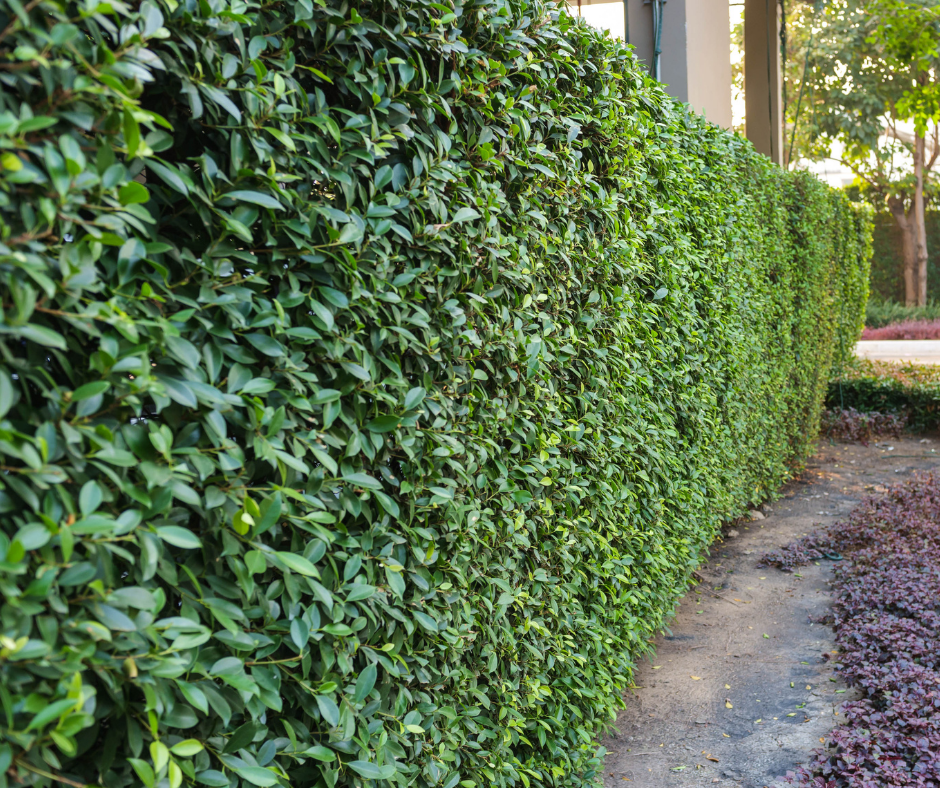Vegetative Screening
go.ncsu.edu/readext?873675
en Español / em Português
El inglés es el idioma de control de esta página. En la medida en que haya algún conflicto entre la traducción al inglés y la traducción, el inglés prevalece.
Al hacer clic en el enlace de traducción se activa un servicio de traducción gratuito para convertir la página al español. Al igual que con cualquier traducción por Internet, la conversión no es sensible al contexto y puede que no traduzca el texto en su significado original. NC State Extension no garantiza la exactitud del texto traducido. Por favor, tenga en cuenta que algunas aplicaciones y/o servicios pueden no funcionar como se espera cuando se traducen.
Português
Inglês é o idioma de controle desta página. Na medida que haja algum conflito entre o texto original em Inglês e a tradução, o Inglês prevalece.
Ao clicar no link de tradução, um serviço gratuito de tradução será ativado para converter a página para o Português. Como em qualquer tradução pela internet, a conversão não é sensivel ao contexto e pode não ocorrer a tradução para o significado orginal. O serviço de Extensão da Carolina do Norte (NC State Extension) não garante a exatidão do texto traduzido. Por favor, observe que algumas funções ou serviços podem não funcionar como esperado após a tradução.
English
English is the controlling language of this page. To the extent there is any conflict between the English text and the translation, English controls.
Clicking on the translation link activates a free translation service to convert the page to Spanish. As with any Internet translation, the conversion is not context-sensitive and may not translate the text to its original meaning. NC State Extension does not guarantee the accuracy of the translated text. Please note that some applications and/or services may not function as expected when translated.
Collapse ▲ Urban trees provide a lot of benefits to us where we live, work, and play. They clean the air we breath and provide us shade. Another benefit I talk about quite often is using evergreen trees and shrubs for privacy screening. The most important thing I have to say about evergreen screens in Union County is actually a request – please stop planting Leyland Cypress trees. Leyland Cypress is a heartbreaking tree because they suffer from fatal fungal diseases that are not preventable or treatable. Just when they get to a perfect size, usually right around age 20, Leyland Cypress will start to die very quickly. This is because Leyland Cypress is native to the Pacific Northwest so they simply cannot tolerate our hot dry summers. They grow fine when they are young, but once they reach a mature size they become overwhelmed by drought stress and quickly succumb to fungal diseases. I recommend planting Eastern Red Cedar instead of Leyland Cypress. Because Eastern Red Cedar is native, we know it tolerates our soil and our hot, dry summers. Eastern Red Cedar may not be as pretty as Leyland Cypress, but it won’t quit on you after 20 years.
Urban trees provide a lot of benefits to us where we live, work, and play. They clean the air we breath and provide us shade. Another benefit I talk about quite often is using evergreen trees and shrubs for privacy screening. The most important thing I have to say about evergreen screens in Union County is actually a request – please stop planting Leyland Cypress trees. Leyland Cypress is a heartbreaking tree because they suffer from fatal fungal diseases that are not preventable or treatable. Just when they get to a perfect size, usually right around age 20, Leyland Cypress will start to die very quickly. This is because Leyland Cypress is native to the Pacific Northwest so they simply cannot tolerate our hot dry summers. They grow fine when they are young, but once they reach a mature size they become overwhelmed by drought stress and quickly succumb to fungal diseases. I recommend planting Eastern Red Cedar instead of Leyland Cypress. Because Eastern Red Cedar is native, we know it tolerates our soil and our hot, dry summers. Eastern Red Cedar may not be as pretty as Leyland Cypress, but it won’t quit on you after 20 years.
Another very common scenario I see with privacy screening is that someone has a row of mature trees along the property line that provide shade, wildlife habitat, and aesthetics, but because the limbs don’t extend to the ground, these mature shade trees do not provide privacy screening. So the question is, what do I plant in the dense shade under these mature trees to create a privacy screen? I would recommend trying a few different things at the same time to see what does well. I would recommend Cherry Laurel, Yaupon Holly, Burkwood Osmanthus, Florida Anise Tree, and Rhododendron. A diversity of plants is very important in the urban forest. This way, if an insect or disease comes along that feeds on Cherry Laurel, you don’t lose your entire privacy screen all at once because you also planted other species. So choose a diversity of plant species for a more resilient landscape and urban forest.




